If you look at the ATP rankings you start wondering, is the one-handed backhand experiencing a slow death?
The one-handed backhand was by far the more popular stroke on that wing in the days of Borg and McEnroe. Björn Borg was actually one of the players who popularized the two-handed backhand and brought in a more top-spin heavy style. Then players like Edberg, Federer and Sampras kept the flame burning for many years. I am sure many players shaped their game after Federer and we still have high-ranked players with the one-handed backhand today.
If we look at the top 150 players, I count ten one-handed backhands. This is has to be the lowest number ever.
Here are the players using one-handed backhands on the ATP Tour right now
Lorenzo Musetti, Denis Shapovalov, Grigor Dimitrov, Stefanos Tsitsipas, Christopher Eubanks, Daniel Altmaier, Dusan Lajovic, Stan Wawrinka, Dominic Thiem, and Richard Gasquet are the players I could find with the one-handed backhand (I might have missed someone) inside the top 150 players in the world. You can find out what racquets they use in our Tennisnerd Guide to Racquets and Strings.
If you wonder about racquets for the one-handed backhand, it seems like most pros don’t like to use a 100 sq inch racquet. Tennis Warehouse has a section for pro player gear, where you can find the endorsed racquets for sale.
Musetti – HEAD Extreme Tour painted like a Boom pro
Shapovalov – Yonex VCORE 95
Dimitrov – Wilson Pro Staff 97 18×18
Tsitsipas – Wilson Blade 98 18/20
Eubanks – Tecnifibre Tfight 305 (98)
Altmaier – Yonex Ezone 98
Lajovic – Wilson Pro Staff Six One 95
Wawrinka – Yonex VCORE 95D
Thiem – Babolat Pure Strike 18/20
Evans – Wilson Pro Staff Six One 95
Of the top 100 players on the WTA tour, I only know Diane Parry, but I am sure I am forgetting a name with the one-handed backhand. Please let me know in the comment. It was never as popular on the WTA as on the ATP, but it has also suffered a similar trend.
Why are so few players using the one-handed backhand?
There are a few reasons we are not seeing as many one-handed backhands on the highest level of tennis anymore.
Tennis is faster and more top-spin-oriented these days. The one-handed backhand requires a longer preparation and a different distance to the ball than the two-hander. We have all seen how Federer struggled with Nadal’s massive top spin on that side. A modern example of how difficult it is to hit high balls on the one-handed backhand is a match-up like Alcaraz vs Shapovalov. I watched them play live at the French Open last year and it was clear how much Shapo struggled with Alcaraz’s spinny strokes.
One reason the game is faster and the balls bounce higher is the larger head sizes, more powerful racquets, and polyester strings. Now, you can hit the ball with massive velocity, and the ball lands over and over, more thanks to the strings than the racquets, but the racquets have also become more powerful with higher launch angles.
Attacking with a one-hander is one thing, but since the swing is longer and the contact point is further away from the body, it is more difficult to defend with.
Can you still use the one-handed backhand today?
Yes, of course you can. Many coaches argue that it is easier for older players to learn the one-hander. And on the recreational level of tennis, the shots are rarely heavy or fast enough to punish a shot, so the one-hander can still thrive.
The one-handed backhand works well for some players also on the tour. Dimitrov is having a great season. Tsitsipas is still a top-ten player, although he has struggled in the last year. Shapovalov and Thiem are fighting to return to their glory days. Musetti is doing okay, but not quite fulfilling his promise, you could argue.
The most exciting and in-form new players are all using two-handed backhands. If this trend continues, we might hardly see any one-handers on the tour in ten years’ time. This would be a shame because diversity and contrast in styles are important for tennis. You can also argue that the one-handed backhand is the more aesthetically pleasing shot.
What do you think? Is the one-handed backhand experiencing a slow death? And is that something we should worry about or not?
Ps. Stan the Man won yesterday, so that is something. Ds.
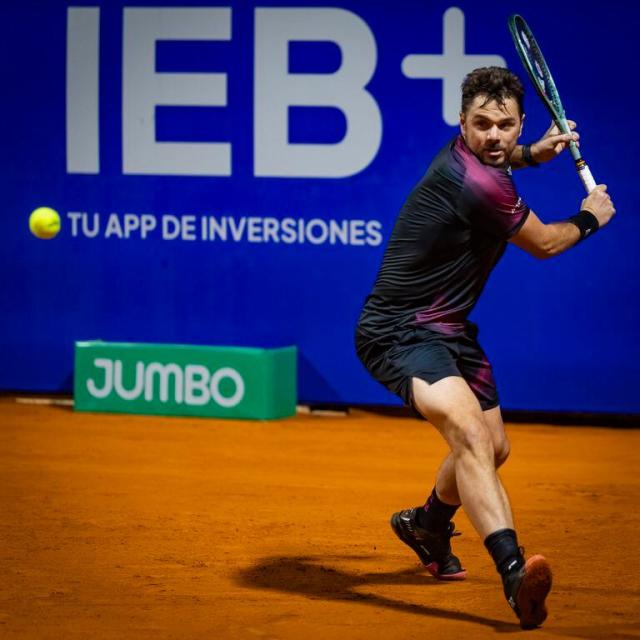


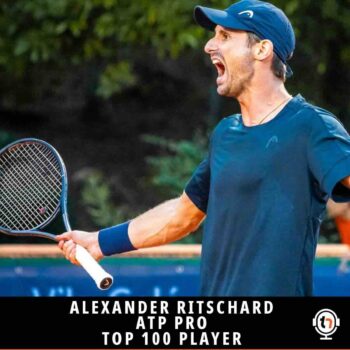
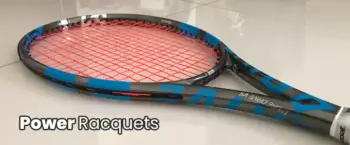
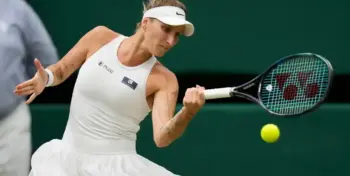
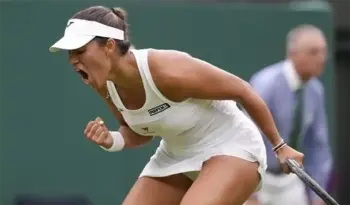
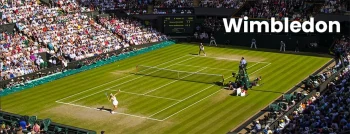




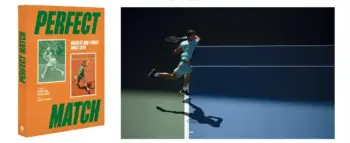

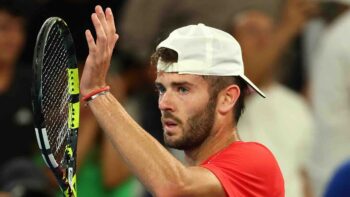

Daniel Evans
Dominic Thiem
Evans I missed, yes!
But is 100 cm2 raquets working for your one handed backhand? You really liked the blade v8 100 I think.
Hopefully that also goes for the blade v9 100 that I’m very interested in.
Yes, they can work well! I would say it is a matter of taste and style. Pros generally use smaller head sizes overall.
I guess it must be correlated to what kids learn in tennis schools… you can’t learn both.
If you average the head size of the rackets comparing those with one hand and those with two, do you think there will be a difference? I believe that professionals play with a smaller head regardless of the backhand
I agree with you, they use smaller head sizes on average, regardless of type of strokes
My personal experience, I’ve used both over my tennis lifetime (I was a competitive junior, now 55 years old and solid 4.5 club player) I agree with your comments, the one hander is great to attack with however I find the two hander more effective for all shots, return of serve, high balls, defence etc. My go to is now the two hander however when I hit/play with some club players when I know I will have more time I do enjoy ripping topspin one handers :)
Tatjana Maria and Viktorija Golubic have a one-handed backhand
On WTA… Karolína Muchová. She’s also the most interesting player to watch (for me) on the WTA at the moment. Coincidence? I think not.
ATP-Players (Top 150):
– Stefanos Tsitsipas (10)
– Grigor Dimitrov (13)
– Lorenzo Musetti (26)
– Christopher Eubanks (34)
– Daniel Evans (44)
– Daniel Altmaier (53)
– Dusan Lajovic (58)
– Stan Wawrinka (60)
– Christopher O’Connel (67)
– Dominic Thiem (90)
– Aleksandar Kovacevic (102)
– Denis Shapovalov (127)
– Richard Gasquet (130)
– Corentin Moutet (145), plays a one-hander at the moment, I think due to an injury
WTA-Players (Top 150):
– Tatjana Maria (50)
– Diane Parry (61)
– Viktorija Golubic (71)
– Jessika Ponchet (127)
WTA-Players (Outside Top 150):
– Kathinka von Deichmann (284)
– Gabriela Lee (319)
– Margarita Betova (née Gasparyan) (904)
– Jessy Rompies (252 doubles)
Great summary! Thanks
Chris O’Connell’s and Alex Kovacevic and Mpetshi Perricard just outside top 150
The dying one handed back hand is a small aspect of a dying brand of tennis. In my opinion many tournaments are looking for a slower brand of tennis with longer rallies for financial gains. This makes the fast paced game which includes the serve and volley, one handed backhand less effective and so is loosing popularity. In my view ATP should understand that keeping the game diverse gives different style of players opportunity to showcase their prowess and brings out the beauty in tennis, also brings in more fans.
In my opinion ATP should have a rooster system forcing few of the tournaments to have fast paced courts and balls which bounce less. This will keep the game diverse and much more interesting. The all time best rivalry between nadal & federer is a prime example of this, due to which tennis has reached such great heights in the present era.
I don’t understand (or rather accept) the “either-or” approach of most coaches (and – surprisingly – players, but that may be a result from the former) to backhands. To me, the two-hander is just another variation of backhand along with the slice and topspin/drive and the specific choice and execution in respective situations are completely intuitive and seamless. Since (as mentioned in the article) the one-hander is more demanding in terms of positioning and timing and my level is not exactly “GS title bearer”, in any tight situation I resort to the two-hander. Like above-shoulder-height backhands, no time for a proper backswing/preparation, monstrous power shots from the opponent that I need extra control do deal with… And, to repeat myself, the choice is completely subconscious, being intuitively a one-handed BH guy.
BTW I’ve been repeatedly irritated over the years by some of Grigor Dimitrov’s coaches and commentators claiming he had too many weapons at his disposal and that was problematic, because he was wasting time to choose and doing it wrong pretty often :-)
Because tennis academies do not teach the one-handed backhand , unless the player insists that’s what he/she wants; and that’s unfortunate.
You also forgot about Andrea Vavassori?
I think we should look somewhere else than only the top 200 players if we want to find the answer to the question in the topic, namely the lower ranked (especially the younger) players and juniors. The future trend should be visible among those guys and without having analyzed it, I believe, that Jonas has the right intuition here. But then again, the game keeps evolving all the time, so who knows: even if less players use the one hander today, there might be a shift back in the future, if other aspects of the game change. Plus, if req players use it, it should never die entirely.
P.S. In this year’s AO men’s doubles finals 3 out of 4 players on court used the one hander, so there is some hope for it, even on the pro tour?
I really appreciate your work Jonas. A lot. But here you are lost. I wrote a PhD on how standards arise. Never do standards arise based on rational grounds. Here, in this industrialized sport, the choice is predominantly made by parents and tennis trainers for the children to hit a double-handed backhand (cf. Skidelsky’s article in The Independent). Big investments, so cut out risk. And, hence, pertaining gains. Short-term thinking and ensuing acting. The inevitable outcome: a forceful conventional standard delivering suboptimal results. It’s not without reason that Federer – not known for his radical views – recently felt compelled to comment that ATP/WTA tennis is lacking diversity in the type of game that is played currently.
For the same reason, rackets generally are not getting lighter because it is better for the technique or performance of players. Over 98% percent of all tennis players are amateurs that hit a ball every now and then, that don’t have the power or the technique to handle heavy (and unforgiving) rackets. Since the period of difficult times (big brand bankruptcies) in the racket industry that market has become the main focus of production for tennis rackets manufacturers. Production for the masses. No matter the usual advertisements suggesting otherwise. Apart from the amateurs’ basic racket needs, consider the upside of constant reduction of the use of raw materials in your production chain. Growing up and playing with lighter rackets means playing with lighter rackets as adults, whether amateur or professional. We all know how little tennis players (especially the top players) like to change their rackets. One of the main reasons is that the technique co-develops with the racket. As technique cannot easily be changed fundamentally, neither can the weight of the racket be easily changed, certainly not once technique patterns have established themselves. Each time you play a serious tournament you eventually go back relying on your beloved Prestige 360+ MP. The fact, Jonas, that you are reaching an age at which at the same time it is difficult to maintain using (the weight of) that racket, doesn’t mean either that in general it is good to use light(er) rackets. The fact that Djokovic, Federer, Murray, Nadal and Wawrinka (unusually) dominate several generations of top players (with lighter rackets) against evolutionary competition odds, should make one consider the question if their heavy rackets (Nadal using the lightest) also played a role there.
On a good day, one-handed backhand is a killer, think about how Altmaier beat the mighty Sinner last year at RG. But those sunny days are rare and most of the time, these players suffer defensively and the comebacks take a longer time, such is the case with Thiem and Shapo. If Tsitsipas can create some magic and win a Slam, it may become popular again, otherwise yes it will die a slow death amongst pros. The flag will continue be carried by the 40+ amateurs though.
I like the One handed backhand. I can get good topspin one handed and the slice back hand is useful. I think good players should have all the options.
Paul Braithwaite